








MIDWEEK UPDATE 29 JULY 2020   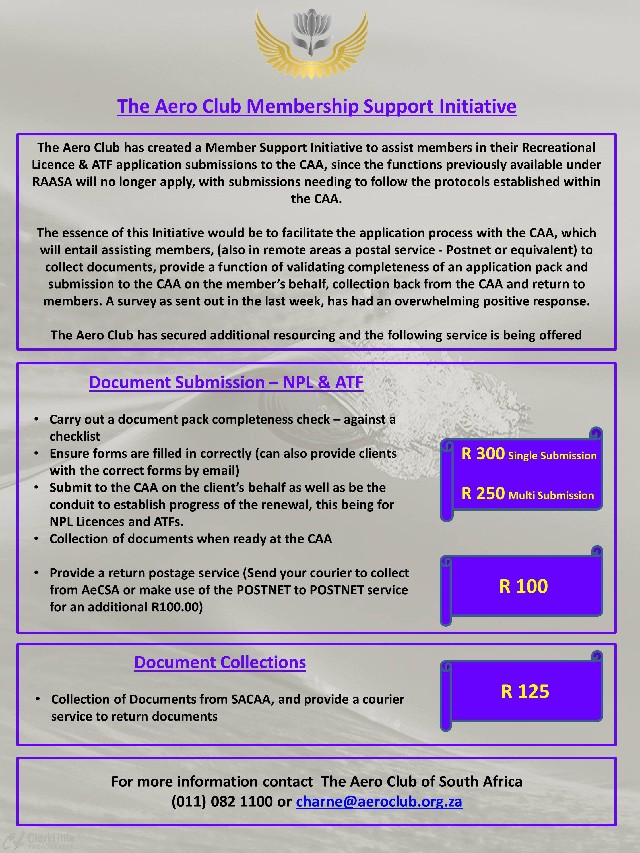  COVID 19 REGULATIONS AND INITIATIVES AND AEROCLUB NEWS   CORONA VIRUS AND AVIATION EVENTS Due to Covid 19 and regulations regulating travelling as well as restrictions controlling the number of people congregating together, no aviation events will take place in the foreseeable future. Pilot's Post will advise our readers as soon as this changes. SAPFA EVENTS FOR 2020 - PART 2 Forthcoming Events: We will rely on good media presence and reporting for our supporters to enjoy it afterwards. Furthermore the Secunda Speed rally will be held on the original planned date of the 12th September, and essentially it will be a single day event (as no leisure stay-overs are allowed at this point), Secunda is close enough to the GP area to enable the event to take place in a single day, test flights however will not be possible, thus handicapping will somewhat be curtailed. Event entries are open on the Speed Rally website, and ensure that all participants familiarise themselves with the Covid SOP on the SAPFA website. Virtual Flying Competitions: While we are restricted from enjoying the freedom of flight, SAPFA has been hard at work to find a way of flying without the risk of infection and have been partially successful in our endeavours. More on that later. We have also developed a way of flying without restriction, without leaving your home and without burning avgas! (You can also access this from Virtual Flying links on the SAPFA website and the World Rally Flying Championships 2020 website). We have been working with Aeroworx to bring you the enhancements to X Plane 11 that will allow you to fly a realistic competition and enjoy the freedom of virtual flying. So far, we have uploaded the scenery files for Stellenbosch and Brits. While this will require a small investment and a good internet connection, this will be the cheapest aircraft you even own and flying. Chapter 322 Monthly Zoom Meeting. Details to follow. PLEASE GO TO www.youtube.com/channel/UCCuRVZAGodT6sztTeXBGeMw and subscribe to our YouTube channel   VAN'S ANNOUNCES NEW OPTIONAL RV-14 ENGINE CONFIGURATION  Van's Aircraft has announced a new powerplant option for the RV-14/14A, providing more choices for builders of the airplane in terms of power and weight. In this new configuration, which is based around a Lycoming IO-390-EXP119 engine rated at 215 HP, performance is significantly increased while shedding weight off the nose of the airplane. Photo © Van's Aircraft. In Van's testing conducted when the RV-14 was originally released, the aircraft equipped with the original standard engine - the IO-390A - was capable of a top speed of 203 mph at max gross weight. With the new 390-EXP119 engine, top speed in testing was measured at just over 216 mph. In the climb-rate department, aircraft with the 390A engine at solo weight climbed at 1800fpm. With the 390-EXP119 engine, the same aircraft performed at 2050fpm. Gross weight numbers were similarly improved, as shown in the table below. Take-off and landing tests with the new engine yielded significantly improved ground-roll measurements as well. 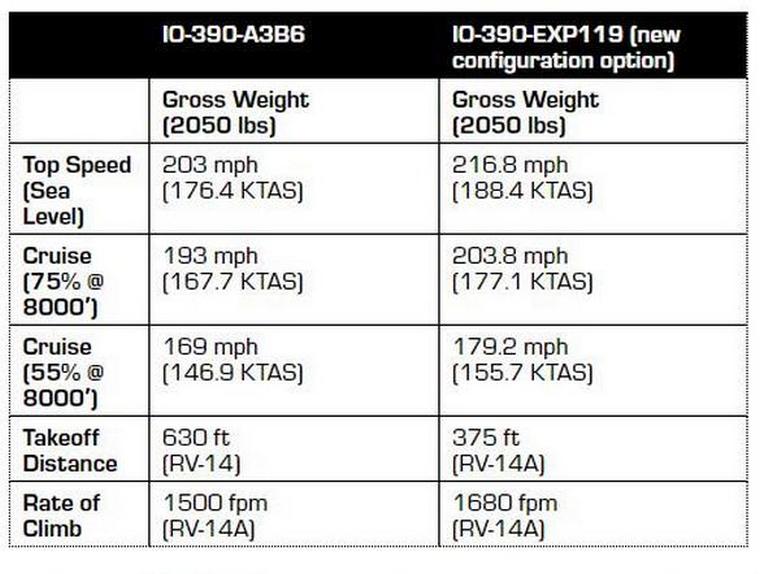 It incorporates a newly designed cold air induction: the intake plenum is completely separate from the oil sump and the aluminium intake pipes are perfectly tuned for maximum horsepower. To take advantage of the increased flow capabilities, the engine is delivered standard with a high-performance Airflow Performance FM-200C fuel injection system. This fuel servo is tuned specifically for the Van's RV-14 and is the highest-flowing servo available for a 4-cylinder Lycoming engine. All of this results in more power driving your prop for maximum performance. The 390-EXP doesn't just pack on the muscle, it also sheds weight. The new sump has a 7-quart oil capacity, reducing the wet weight of the engine. Aluminium intake pipes further reduce the weight of the new induction design. The accessory housing was optimized for modern glass avionics by removing the unneeded drives for a vacuum pump and tach drive. Even the oil pump shed some weight using a new billet aluminium housing. These new parts make the 390-EXP119 weigh even less than the 200hp 360s the RV-14 was originally designed with. And, the 390-EXP119 weighs about 10 pounds less than its 390A cousin. The new cowl design is essentially the same in terms of weight. The new combined exhaust and exhaust ramp cooling flap system actually weighs slightly less than the original RV-14 exhaust. More horsepower, less weight - The end result is significant increases in speed and rate of climb.  ATP FLIGHT SCHOOL TAKES DELIVERY OF SIX NEW PIPER ARCHERS AND SIGNS PURCHASE AGREEMENT FOR 100 PIPER TRAINERS 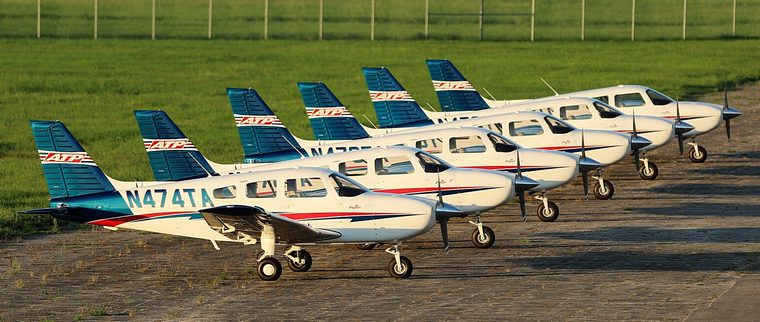 ATP Flight School accepted delivery of six new Piper Archer TXs and renewed a 100-aircraft order with Piper Aircraft, Inc. ATP operates the largest fleet of 402 flight training aircraft, the majority of which are Pipers. Photo © Piper Aircraft. "Anticipated airline pilot demand exceeds the current capabilities of the flight training industry," said Michael Arnold, Director of Marketing, ATP Flight School. "ATP continues to invest in our graduates' careers with the best flight training fleet in the industry." ATP has opened six locations in 2020 and plans to add five more before the end of the year. The new Piper aircraft provide ATP students access to a reliable, technologically-advanced training platform. "ATP continues to expand as one of the largest private training organizations in the United States. Piper Aircraft is delighted to be a part of their continued growth. The Archer and Seminole are durable training products that feature advanced avionics technology which make them ideally suited to the demands of their rigorous training programs," said Piper President and CEO Simon Caldecott. "We look forward to continuing to work with ATP as they continue their commitment of providing well trained pilots for the commercial aviation industry." As a classroom, the Piper Archer TX provides students everything needed to learn to fly safely. Standard instrumentation includes the Garmin G1000 NXi glass cockpit system, a perfect mixture of low workload and high technology. Piper's specially created flight school interior, designed to withstand the rigors of flight training, is standard and the option for factory-installed air conditioning adds to the Archer's appeal as a training aircraft. It is powered by the 180 hp Lycoming 0-360-A4M and offers 128 ktas / 237 km/h cruise speed.  SWEDISH MEDEVAC PC-24 COMPLETES SUCCESSFUL MAIDEN FLIGHT  The first of six PC-24s for the Swedish Air Ambulance Organisation took off from Buochs Airport for its maiden flight on 22 July 2020. Sporting the national colours of Sweden - blue and yellow - the Super Versatile Jet will cut a dash across Swedish skies. Photo © Pilatus Aircraft. As an air ambulance service organisation, KSA will provide advanced medical assistance and access to fast, professional aeromedical care, to everyone living in Sweden. The full KSA fleet will comprise six PC-24s, with all aircraft scheduled for delivery in 2021. The maiden flight heralds the start of numerous flight tests to be performed by Pilatus. On completion of these tests, the PC-24s for KSA will be transferred to Aerolite AG, the specialist Swiss company appointed to oversee the installation of the medevac interior. The outstanding flexibility of the PC-24 opens up a wealth of possibilities for use as a medevac aircraft. The cabin offers sufficient space for three patients plus medical personnel. The PC-24's large cargo door also facilities speedy loading and unloading of patients. All these advantages, combined with the PC-24's STOL credentials, make it the ideal aircraft for all air ambulance missions. After the Royal Flying Doctor Service of Australia and the US North Slope Borough Search and Rescue Department, KSA is the third organisation to deploy the PC-24 as a medevac aircraft.  FAA APPROVES LYCOMING'S ELECTRONIC IGNITION SYSTEM ON ROBINSON HELICOPTERS  Robinson Helicopters announced that R22 and R44 helicopters purchased after 15 January 2020 will be outfitted with Lycoming's recently certified Electronic Ignition System (EIS). The EIS offers increased reliability, improved starting characteristics and reduced maintenance. Photo © Robinson Helicopters. EIS is designed to last the life of the engine with no scheduled maintenance between overhauls, eliminating the required 500-hour inspection. Robinson's Technical Support Supervisor, Pat Cox, noted, "The EIS will make the technician's job easier and will help reduce unscheduled maintenance."  HISTORIC LEARJET 28 TO MAKE FINAL FLIGHT TO MUSEUM 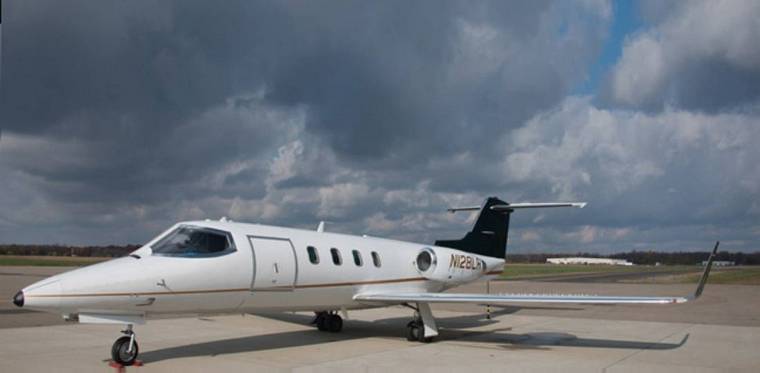 The first Learjet 28 Longhorn (S/N 28-001)-which as a prototype was famously flown by Neil Armstrong and Learjet test pilot Pete Reynolds in 1979-will have a permanent home in its retirement. Photo © Wikipedia Registered as N128LR, the jet is scheduled to arrive at Neil Armstrong Airport in New Knoxville, Ohio, on Wednesday, August 5, which would have been the first man to walk on the Moon's 90th birthday. Scheduled to co-pilot the twinjet on its last flight is former NASA astronaut and two-time space shuttle pilot Col. Gregory Johnson (USAF Ret.). Citing Armstrong as a personal hero, Johnson said it would be an honour to co-pilot the historic Lear 28 to its new home. It will remain at the airport on display until ready to be transported to the nearby museum, capping a five-year effort by its board of directors to obtain the airplane. The Longhorn will be installed near a 1946 Aeronca 7AC Champion, the first aircraft Armstrong ever flew.  LEONARDO'S M-346 FIGHTER ATTACK EMBARKS ON MAIDEN FLIGHT EQUIPPED WITH GRIFO RADAR 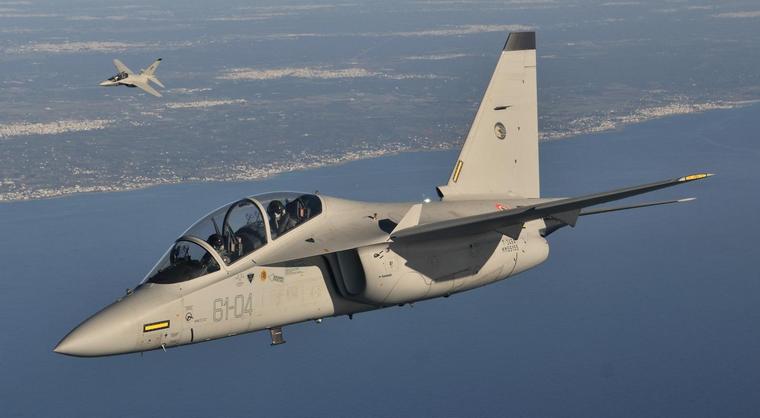 The operational version of the M-346 Fighter Attack, equipped with an optimised variant of Leonardo's Grifo radar, successfully completed its maiden flight. The M-346FA is the new light attack variant from the Company's M-346 Light Fighter Family of Aircraft (LFFA). It offers multirole capabilities with a single platform, cost-effectively delivering both training and combat roles. Photo © Leonardo Aircraft. Lucio Valerio Cioffi, Managing Director of Leonardo Aircraft, said: "I am extremely pleased with the work we have done to achieve this important milestone and the pace at which we have reached it. With this latest achievement, the most advanced training aircraft available on the market will soon be joined by the more versatile M-346 Fighter Attack. The M-346FA offers all of the advanced training capabilities of the core M-346 while also integrating latest generation sensors and equipment, allowing it to operate as an effective light attack aircraft. We will now continue development as we prepare to deliver the first aircraft to its international launch customer in 2021."  The aircraft's primary sensor is Leonardo's mechanically-scanning, multi-mode Grifo-M-346 radar, a specially-optimised variant developed by Leonardo for the M-346FA. The Grifo-M-346 is a reliable, high performance solution delivering great accuracy. The M-346FA is also protected by a complete Defensive Aids Sub-System (DASS), while its high-end, network-centric communications suite which incorporates a Secure Communications system and Tactical Data Link ensures interoperability. The platform can also employ LINK-16 in order to interoperate with NATO forces. The M-346FA can employ an extensive range of air-to-air and air-to-ground weaponry (including IR guided, radar and/or laser/GPS) and can be fitted with a gun pod, reconnaissance sensors and target designation pods and electronic warfare, all integrated with a Helmet Mounted Display (HMD) system for both pilots. In the training domain, the M-346FA benefits from all the advanced features of the M-346 trainer, including the ability to integrate into live-virtual-constructive (LVC) environments. This involves linking the real training aircraft in the sky with simulators on the ground and incorporating virtual friendly and opposing forces, allowing trainee pilots to challenge a wide range of tactical scenarios. The trainer version of the M-346 is currently in service with the air forces of Italy, Singapore, Israel and Poland.   EHang announced the aerial sightseeing trial flights in Yantai, a coastal city in East China. An EHang 216 took four passengers to the air for aerial sightseeing trips over the sea around the beautiful Fisherman's Wharf in Yantai city, one of the many AAAA national tourist attraction locations throughout China. Photo © EHang. This trial flight event was part of EHang's world flight tour, which is aimed to demonstrate the reliability and versatility of its passenger-grade AAVs through safe autonomous flights in various commercial use cases, including passenger transportation, aerial sightseeing, air logistics, medical emergency response, etc. EHang's passenger-grade AAVs have completed thousands of trial and demo flights in 21 cities and 6 countries, including China, the U.S., Austria, Netherlands, Qatar and UAE. EHang's Founder, Chairman and CEO, Hu Huazhi said, "As the world's first provider of passenger-grade AAVs, we are honoured to prove this game-changing air mobility solution by demonstrating flights to regulators, customers, partners and the general public. The positive supports and feedback have strengthened our determination in our quest to bring this new style of mobility to the people."  BELL AUTONOMOUS POD TRANSPORT COMPLETES BEYOND VISUAL LINE OF SIGHT FLIGHT  In the race to provide viable, aerial solutions to move goods and information, Bell's Autonomous Pod Transport (APT) surpassed a significant step in this journey: beyond visual line of sight (BVLOS) flight. Photo © Bell Helicopters. This new development is made possible through Bell's partnership with the Choctaw Nation of Oklahoma (CNO). In an agreement announced in late 2019, CNO and Bell announced that Bell had joined CNO's Unmanned Aircraft Systems Integration Pilot Program (UASIPP) team where flights and tests will be conducted as part of the FAA UASIPP in preparation for future advanced UAS operations. CNO is one of nine active UASIPP sites selected by U.S. Department of Transportation Secretary Elaine L. Chao in May 2018. Both organizations share an interest in the growth of technology to serve communities, which is why CNO has supported Bell APT flight testing on their test site location in rural, south-eastern Oklahoma. Bell and CNO signed an additional agreement in early 2020 to establish a relationship which will provide Bell a flight test location for Bell's unmanned vehicles. CNO became the obvious choice for flight test activity for Bell because of its proximity to Dallas-Fort Worth and their commitment to building facilities that support requirements necessary for these operations. In return, Bell is providing guidance to CNO on the creation of their Emerging Aviation Technology Test Centre in regard to safety and efficient flight operations. Bell is eager to expand APT's BVLOS flights to eventually support medical supply drops, basic supply chain operations and even kiosk deliveries. Our strong partnerships and continued innovation bring us closer to achieving this future goal, one flight at a time.  NATO AIRLIFT MANAGEMENT PROGRAM EXPANDS C-17 TRAINING CAPABILITY WITH BOEING SERVICES CONTRACT 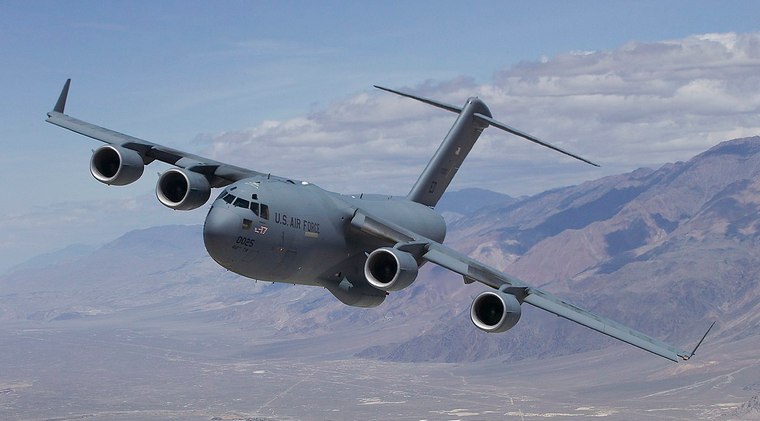 Boeing [NYSA: BA] will provide aircrew training support for the Strategic Airlift Capability's multinational fleet of C-17 aircraft under a new U.S. Air Force Foreign Military Sale contract for a C-17 Weapon System Trainer (WST) that will be stationed at Pápa Air Base, Hungary. Photo © Boeing. "The NATO Airlift Management Programme provides Strategic Airlift Capability nations with full life cycle management for aircraft and facilities, embodying of collective ownership and Smart Defence," said Gregory Clark, programme manager, NATO Airlift Management Programme. "The aircrew training partnership with Boeing will ensure ongoing readiness of C-17 aircrews to our member Nations." Through partnership with Boeing, NATO and the Strategic Airlift Capability can rely on nearly 30 years of experience providing quality training systems and support for the global C-17 fleet. This is the first C-17 training device for Pápa Air Base. It will allow for agile aircrew and engine maintenance training and reduce the time and costs associated with travel, while ensuring aircrew readiness.  "We are excited to continue our partnership with NATO and expand its C-17 aircrew training capability," said Mark Hayes, Pápa, Hungary base manager for Boeing Global Services. "This regional training location will enable the Strategic Airlift Capability to add velocity to aircrew training and proficiency, maintain training readiness and provide the flexibility to deliver European airlift for decades to come." Boeing's C-17 WST includes an air vehicle station and loadmaster station, both with instructor operator stations; a core integrated processor task trainer and computer-based training and courseware. Two years of initial spares to support the training device are also included. This C-17 training device includes innovative technology with upgrades to the visual system and glass mirror display system expanding the total field of view. Boeing is also incorporating technology enhancements to address obsolescence and concurrency with latest aircraft block configuration. NATO C-17 training at Pápa Air Base is expected to begin in 2022.  BRAZIL An ultralight Kolb Flyer SS crashed in an emergency landing attempt on a street in Guabiruba, Santa Catarina. The two occupants were injured. Syria, 160nm east of Beirut: A Mahan Air Airbus A310-300, on a flight from from Tehran Imam Khomeini (Iran) to Beirut (Lebanon), was enroute at FL340 about 160nm east of Beirut in Syrian Airspace near the triangle Syria, Jordan and Iraq when the crew performed an abrupt manoeuvre to avoid two fighter aircraft and climbed the aircraft at least 600 feet. The aircraft subsequently returned to FL340, requested medical assistance for the arrival at Beirut and continued to Beirut for a landing without further incident. A number of passengers needed medical assistance. Reports as to what fighter aircraft caused the upset are unclear, there are unverified claims of Israeli or US fighter aircraft. Iran's State TV IRIB claims the fighter aircraft were Israeli aircraft, Syria's states controlled Arab News Agency SANA however reported the fighter aircraft were US ones. Medical Services (Red Cross) in Beirut reported no passengers needed to be taken to a hospital, a number was treated mainly for shock.  Germany, Lackhausen neighbourhood, Wesel: A TL Ultralight TL-96 Star with two on board crashed into a house in the Lackhausen neighbourhood, Wesel, Germany shortly after take-off from Wesel-Römerwardt Airfield. The ultralight was destroyed by the post-crash fire and the two people onboard and one person inside the house were fatally injured. A child on the ground received minor injuries. The BRS was found away from the crash scene. Vietnam, Ho Chi Minh City: A Vietnam Airlines Airbus A321-200 on a flight from Ho Chi Minh City to Banmethuot (Vietnam), was climbing through FL170 out of Ho Chi Minh's runway 25L with a number of thunderstorm cells more than 20nm away when the aircraft encountered hail for about 7 seconds causing the captain's windshield to crack. The crew decided to return to Ho Chi Minh City for a safe landing on runway 25R about 25 minutes after departure. USA, near East Canyon Reservoir, Morgan County: A Van's RV-7 with one on board following a loss of engine power force landed to major roadway terrain near East Canyon Reservoir, Morgan County, Utah. The aircraft clipped the roadway embankment, sustaining substantial damage. The sole pilot onboard received minor injuries. USA, Evensville: A Canadiar CRJ-90operated on behalf of American Airlines by PSA Airlines on a flight from Charlotte to Cedar Rapids was enroute at FL360 about 40nm northwest of Evansville when the crew decided to divert to Evansville due to a left-hand cracked windshield. The aircraft landed safely on Evansville about 20 minutes later. USA, between Valley Springs and San Andreas, Calaveras County: A MD Helicopters MD600N operated by PG&E with three on board during a survey flight experienced an emergency autorotation to open field terrain between Valley Springs and San Andreas, Calaveras County, California. The helicopter was destroyed by fire and the three occupants onboard received minor injuries.  USA, Tehachapi, Kern County: A Van's RV-8 with only the pilot on board impacted a building under unknown circumstances near Tehachapi Municipal Airport, Kern County, California. The airplane was destroyed and the pilot onboard was fatally injured. Jordan: A Royal Jordanian Air Force Sikorsky UH-60 Black Hawk was damaged when it made a forced landing in an undisclosed location. Preliminary information suggest that the cause of the accident was "lack of vision after encountering dust" (i.e. brownout). No injuries were reported.   28 JULY 1914  The outbreak of World War I changed war in a twofold way. The aircraft was introduced as a weapon of war and turned the sky into a new battle field where about 20,000 flyers, most of them trained pilots die. Contemporaneously described as "the war to end all wars", World War One led to the mobilisation of more than 70 million military personnel, including 60 million Europeans, making it one of the largest wars in history. It is also one of the deadliest conflicts in history, with an estimated nine million combatant deaths and 13 million civilian deaths as a direct result of the war.  |
                         |
 |
 |

Copyright © Pilot's Post PTY Ltd
The information, views and opinions by the authors contributing to Pilot's Post are not necessarily those of the editor or other writers at Pilot's Post.